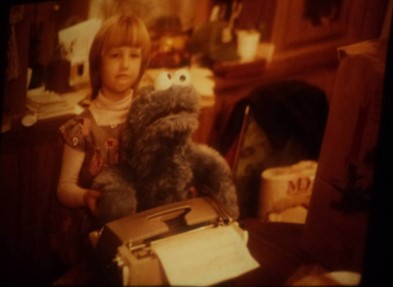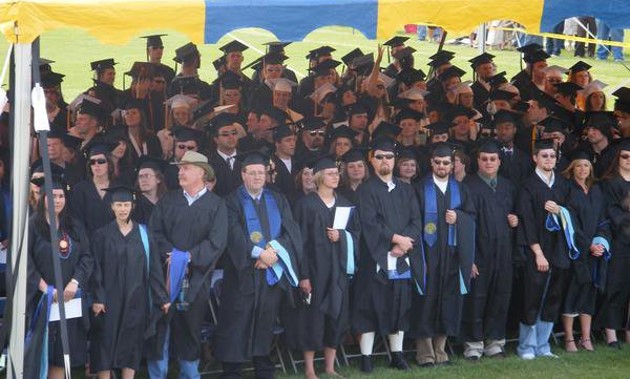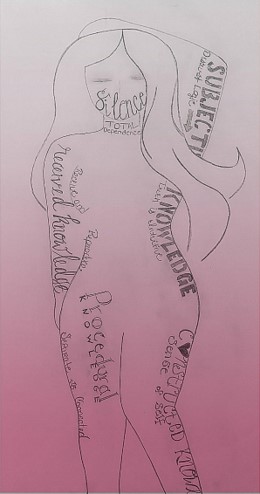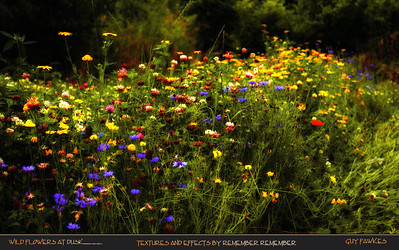By Rebecca Colton
Who Am I
A little bit about me:
I work for my community as an Education Program Assistant for Oregon State University Extension Services in Baker County, Oregon. This is my sixth year providing nutrition and wellness education, cooking classes and physical activities to groups of all ages through OSU. I received my bachelors degree from Eastern Oregon University with minors in Psychology and Business. I am in the final term of the CSSA program, woohoo! My Area of Specialization is first generation students and socioeconomic barriers. I volunteer as an Aspire Coordinator and mentor at the local high school to assist in the transition to higher learning for high school seniors. I am passionate about encouraging low income individuals and families through the difficulties associated with access to higher learning and quality living.
During rare moments of free time, I enjoy experimenting with new recipes, crafting and spending time with my grandchildren. Of course I like my adult kids too, but they are not as much fun as the littles. I enjoy watching cooking and crafting shows and kidding myself into thinking that someday I too will bake a classic French croquembouche or create fine home décor from plastic spoons and upcycled sweaters.
My spouse and I have become quite the road trippers in our empty nesting adventures. We’ve literally driven around the state of Oregon, and make the 7 hour trek to the Oregon coast two to three times a year. I have been someone’s mother for 32 years, at times, many someones… having the freedom to care for only myself has been a blessing.
Answers to a question I often ask myself:
How did I get here?
Generational abuse, generous misgivings, the actions of others
Incarcerated family, fostered siblings, my ancestral tree is a branch
White privilege, dirty feet, food stamps, water in cereal, couches for beds
I was 10 the day MTV launched and suddenly I had heroes.
Cyndi Lauper’s hair with Madonna’s rebellion, coming of age in the 80’s.
The Challenger falls from the sky, and I know exactly where I was when it happened.
The Berlin Wall falls, and I know exactly where I was when it happened.
My journey has been a Rubik’s Cube. My culture is pop.
How did I get here?
I did this. I chose to walk away, say goodbye to pain, forget those who have harmed me, forgive myself for choices that saved my life along the way.
I did this. I raised my children, I worked long hours, and I pushed through self-doubt.
I did this. I celebrate my intelligence, I celebrate the abundance my perseverance creates, I celebrate me.
I did this. I did this with the support and guidance, encouragement and knowledge, given without regard for ability to reciprocate, without expectation, free and clear with no strings attached, by my spouse, my children, my academic advisors, my co-workers, my peers, my close friends, and me.
My Visual Academic Journey
1970’s – Rural Washington

In The Beginning
Reflecting on the diversity of my educational experiences, there is a void of any deviations from white. My earliest years were spent in a two-parent household, a little yellow starter home that my parents helped to build. I remember a conversation about a group of people who agreed to help build each other’s homes for low income loans, much like Habitat for Humanity. This was the home I lived in when I started Kindergarten. At the age of four, my mother produced a fraudulent birth certificate to show I was of age to attend a year earlier than my age allowed. Remembering to age myself up when asked became as normal as learning numbers and letters. I still don’t know why she went to so much trouble to enroll me in school early. I used to think it was because I was so smart, but now I think she saw an opportunity to look for employment with me in school all day.
The diversity of my educational experiences are void of any deviations from white. My earliest years were spent in a two-parent household, a little yellow starter home that my parents helped to build. I remember a conversation about a group of people who agreed to help build each other’s homes for low income loans, much like Habitat for Humanity. This was the home I lived in when I started Kindergarten. At the age of four, my mother produced a fraudulent birth certificate to show I was of age to attend a year earlier than my age allowed. Remembering to age myself up when asked became as normal as learning numbers and letters. I still don’t know why she went to so much trouble to enroll me in school early. I used to think it was because I was so smart, but now I think she saw an opportunity to look for employment with me in school all day.
Constantly On The Move
I have no recollection of having educators of any other race than white. I don’t even recall other students’ races, although there always seemed to be one or two African American students in each grade. Shortly after school started, my parents began to realize their ill fit for parenting and the long road of looking for stability, being the new kid, and seeking resources within a single parent household began. From first grade through sixth grade, I attended ten different elementary schools. We moved off and, on the mountain, in and out of small neighboring towns, so many times, my academic skill became making new friends quickly. I do not have any “lifelong” school buddies, as I never kept any long enough to re-connect.

In the sixth grade, at Daffodil Elementary School, Ms. Kitty Danziero, an older white teacher, identified me as gifted. She became a surrogate mother for a short period of time when I looked forward to going to school, where I would feel a sense of value, feel heard, and feel seen by the teacher. I was placed in a program for other identified students and we supplemented our day with intensive writing courses. There were no students of color in the gifted program, the school demographics were close to 99% white. I have no memories of highlighting different races, and although I would bet, we explored different cultures, it was skimmed so slightly that I cannot recall its significance in my learning. I attended most of 7th – 9th grades at Sumner Junior High School in Sumner, Washington. Because this school served such a large area, there were many changes in residence that did not require a change of schools.
Mid 1980’s High School

During my first 2 years of high school, I attended with basically the same racial make up as I had for all my previous years. Because all rural elementary schools funneled into two junior highs, and finally all into Sumner High School, the racial diversity increased slightly. With the high school in the valley, the biggest separation still existed between socioeconomic status; not between race.
Marcia was mixed race, but no one knew, including me. Marcia was half Latina, half white and blended in well with white students. Thinking back on the occasion Marcia was called “chakka” by a boy in high school, it still didn’t dawn on me that it was racial hatred. I thought it was jealousy, immaturity, a boy she didn’t want to date, but we never discussed it as racism. Marcia did not talk about her Latino father and no one had ever met him. In school, Marcia excelled and was popular, she tried out for cheer leading and held jobs unlike most of us “mountain kids.” This enabled her to buy a car and nice clothing, which aided in her transition to the valley group. I think it would have been empowering for all of us had we been given the proper terminology and history to be able to identify racism when we heard it.
The number of students of color in high school were so few, that they were thought of as “unicorns.” There was a lot of attention given to braided hair, beautiful dark skin tones and the novelty of being friends with a student of color. I viewed students of color in my school as having an endearing quality that other students were drawn to. Economic barriers were so prevalent, for the most part they overshadowed questioning the skin tone differences in a couple of friends.
Babies Having Babies
In my Junior year, shortly after the photo with Marcia was taken, I quit school and moved to the city with my boyfriend (45 minutes away with a car, but a world away without). I just didn’t find the education to be valuable, so I left. He was older, and I was smarter. We moved to Bellevue, Washington and didn’t tell anyone I was only 15. I felt hours away from anything or anyone I’d known before; this move was a complete reinvention. After a year off, working various fast food positions, watching my life pass by one hour at a time, I decided to go back to high school. Providing customer service and a new baby on the way convinced me that school wasn’t so bad.

I found an alternative high school in Bellevue, Washington, called Robinswood. Bellevue was much more racially mixed than I had ever been exposed to, and I was able to make friends of different races to some extent while I was there. The school had a daycare for teen mothers, a parent support group, and a one-to-one teacher student learning process, I was not aware of the forward learning processes they’d taken on at the time. In the parenting group, there were mothers of color, mothers with abundance, and mothers receiving government assistance. We were all teen mothers, with similar daily struggles. Even with the added diversity, race was not a focus of learning, and I don’t recall there ever being discussion over racial diversity during my time there.
BMCC – 2002
A decade after graduating from Robinswood, I started taking classes at a satellite location of Blue Mountain Community College in my town. I was encouraged by an employer who thought I wasn’t respecting my own skills and value. My classes were mostly scheduled in the evenings and mirrored the population of the town. The urge to pair up by similarity was too strong to resist and I often gravitated towards other females my age for support. The diversity in the classes was limited to gender, age and social status. Many of my classes spanned generations of students, but none of color. The faculty was made up of mostly older, white men and one older white woman who used to teach at the high school. With a requirement of a master’s degree to teach on the community college level, finding educated adults to work part time was difficult. The faculty was made up of older white individuals, most of whom were coming out of retirement to teach. I transferred to Eastern Oregon University after only 21 credits completed, looking for the next big adventure.
Unlike my experiences at BMCC, which mirrored high school judgement of clothes, age and perceived social status, when I attended Eastern Oregon University through a distance program, I noticed that online learning could be more about content and less about identity. I did not see nationality, race, gender or age from other students unless it was brought up in discussion. Students were screen names for the most part, and I did not experience much peer interaction outside my computer for the remainder of my undergraduate program
EOU 2007 Graduate

The EOU campus is in a racial desert, white faculty and white students are the majority. I visited campus no more than once a term, but rarely saw students of color on campus. Geographically, the population mirrors the campus with very little diversity. There is evidence of an international student presence, but these students are largely separated from the general population, choosing to remain with other international students, most likely for safety and comfort. The opportunities to get to know students of color at EOU are dependent on the students themselves. Cultural celebrations seem to be marketed to the arts department and not to the general student population. I did not meet anyone I attended classes with at EOU, and during courses focused in business and psychology, I do not recall specific curriculum targeted to diversity. I don’t think my experience with diversity would have benefited from traditional learning on campus, given the current faculty demographic is 90% White.
2020 – OSU Graduate
Successfully Presented Masters Defense 3/13/20

Ten years after my bachelors, and saying I’d never put myself and my family through years of being chained to a computer again…I did it again. I decided that adding education might add opportunities. I worked for Oregon State University for 4 years before I ever thought of going back to school and I was exposed to racial diversity through conferences and training that brought program educators together from all corners of Oregon. Prior to my ECampus experience, I had begun to explore diversity within my state programming. Finding my own voice has been a journey. All in all, my courses at OSU have focused quite a bit of learning on diversity. My goal is to go out in the world and advocate for underrepresented individuals. The CSSA program aligns closely with my personal goals. I have had the opportunity to learn under faculty of color, with multiple identities, from different socioeconomic backgrounds and of various age representations. My experiences in graduate school have been the most diverse by far and allowed me to expand my knowledge of other cultures.
-Becca Colton
“The past has no power over the present moment.”
― Eckhart
Workplace Microaggression
As a professional, I would like to share an experience that has lasted approximately 3 years in my office and continues to affect myself and my colleagues. When we wonder why Faculty of Color are not knocking down the doors in rural areas, it could be in part because of situations like this one. Workplace racial toxicity and microagressions.
An employee who had supervisory authority over others and controlled finances in the office was overheard on several occasions, over a period of years, making racist and bigoted comments towards various oppressed populations. This same person asked a Latinx female Faculty member if her family felt they “betrayed” their Mexican culture by coming to America.
Retaliation
When the majority of our group felt safe enough to call the Office of Equity and Inclusion collectively, (which had gone on for 10 years for the longest colleague), it started a 2-year long process of secret note taking, harassment, anxiety, guilt and documented retaliation for those of us who had complained. The actions of those put in positions to protect us from the backlash and anger generated by this person’s eventual termination were weak at best. We rallied around our Latinx colleague, but she seemed to handle it better than the rest of us. I started bringing a taser to work with me and we had interior cameras installed in our office in case the employee came back. The terminated employee threatened our office through intimidation, and targeted individuals by making anonymous complaints to administration. Sympathetic community members joined the terminated employee in retaliatory behavior.
That’s How I was Raised
Listening to an employee make horrible comments and then follow up with “that’s just how I was raised” was something we’d become numb to and had ignored for years. When the right person challenged our silence, we were able to take the steps to say, “enough.” …that’s when we gained strength. The whole process has been exhausting for everyone in our office, and we are still trying to heal from it.
Reflections
I’ve been reflecting on my experiences related to race in my early education and in my professional life and I’ve made some interesting observations. The definition of diversity is very broad. I realize that many people see diversity as race and gender. These were the main oppressed groups that affirmative action laws were created to protect. My experience with racial diversity has been minimal. I grew up thinking racism was a chapter in my American History book that I didn’t put much thought into. I did not see dominant groups hate out loud towards oppressed groups.
I realize that I was disadvantaged by being raised in a predominantly white area of the United States. I now know that racism was always around me, it was just hidden behind closed doors, and I was never given an opportunity to develop empathy for racial minorities. Not to say I don’t have empathy; I just grew up with a belief that racism was no longer an active part of our lives.

When I think about ignoring bad behavior in the workplace, I used to see it as passive but not hurtful. I now realize that no action IS an action. Hateful words and actions that are directed at someone else in my presence are still hateful. I know I cannot be a part of a multicultural organization if I am not strong enough to take the smallest effort. My professional goals include being a leader, inspiring others and valuing cultures different than my own. I want to be a part of a team that solves complex issues.
I choose to surround myself with people who think differently and have different worldviews.
A Whole New Worldview
Looking at the first picture I found to symbolize my racial experience to my last is telling. With more education, I have experienced greater diversity, with greater diversity, my life has gained deeper perspectives and desire to surround myself with people I can learn from.




























